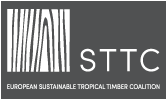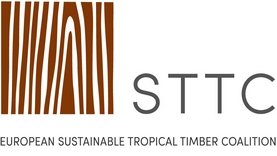Fair&Precious Partners In the Spotlight

In the latest of our interviews with Fair&Precious Partners about their companies and organisations and their views on the campaign and tropical timber’s prospects, we talk to Isabelle Brose, Managing Director of the European Federation of the Parquet Industry, the FEP
STTC/F&P Newsletter: How would you describe the FEP, who you are, and what you stand for?
Isabelle Brose: The FEP was created in 1956, and is the main body representing and defending the interests of the European parquet industry at all levels. Its role is:
- To strengthen and improve the position of wood flooring
- To enhance the growth, prosperity, and stature of European parquet manufacturers.
The key areas of focus for FEP are raw material supply, production, market, and internal affairs. The Federation has 82 members in more than 20 countries; 53 manufacturers, eight national federations, and 23 suppliers. The EU parquet industry has an annual turnover of about €2.5 billion, provides 16,000 direct jobs, and comprises more than 1,000 enterprises. European FEP country parquet production was estimated at 78 million m2 in 2022.
STTC/F&P: Why did FEP decide to become a Fair&Precious partner?
IB: We joined ATIBT for the following reasons and were presented with the possibility of also supporting Fair&Precious. Besides the recurrent issue of availability and affordability of wood raw material, especially oak, the situation of birch plywood supply became acute with the EU measures taken against Russia related to the situation in Ukraine. The ban on imports of wood and wood products from Russia and Belarus pushed some of our members into diversifying supplies including, with the addition of under-appreciated domestic and tropical species. Regarding tropical species, we wanted to avoid potential risks regarding legality and sustainability and to present a strong message and guarantees to our stakeholders and consumers regarding these issues.
STTC/F&P: The tropical timber sector has struggled to hold on to its European market share in recent years. What does FEP see as its key challenges in the flooring industry?
IB: Image is so important. We’re in the era of social media immediacy, a reputation can be ruined from one day to the other. Wood flooring manufacturers want to avoid potential risks regarding legality and sustainability, knowing they won’t have time to prove themselves right if attacked by the press or NGOs.
In a way, the EU Timber Regulation (EUTR) and now the EU Deforestation-free Value Chains Regulation (EUDR) are also perpetuating the idea that importing wood from far away is ‘wrong’. Some time ago having ‘fair trade’ was a positive, as long as populations in Africa, Asia, or South America were supported. But today the focus of end-consumers is also on ‘local’ products, although European wood could have originated from Siberia not so long ago. Our recent FEP Marketing Study throughout Europe is underlining this, the origin of natural wood flooring solutions has become a more important issue for many consumers.
Overall, all validated legality and sustainability claims resonate quite well with European consumers. However, the labels claim with the most impact is still ‘made in the local country’; consumers indicate that this would have the greatest influence on their purchase decision.
STTC/F&P: Does FEP see opportunities in the flooring market for tropical timber to recover lost ground?
IB: Everybody wants wood flooring. In our recent marketing study, we found that;
- European consumer perceptions of natural wood are very positive, with 50% viewing it as important to have a wooden floor at home
- Natural wood flooring is seen as stylish and authentic, adding warmth and character
- And as the use of wood, as a non-fossil renewable resource, is set to increase further, supported by the principles of the EU Green Deal, we can expect to see parquet progressing, including sustainably sourced tropical products.
The necessary diversification of supplies could also help increase the share of tropical wood in parquet production, but good communication – storytelling – will be necessary to circumvent the current appeal of ‘local’ products.
STTC/F&P: Where does FEP see the greatest possibilities for tropical timber use?
IB: Probably in high-end markets and for products requiring higher water resistance.
STTC/F&P: What sort of environmental validation do your member companies require of timber?
IB: Existing certification schemes such as PEFC and FSC are important and meeting the requirements of EUTR and EUDR are mandatory. In addition, and to address the debate over ‘local’ vs imported products, conclusive Environmental Product Declarations (EPD), including the carbon footprint of transport, would be useful. It’s worth noting that reporting obligations for EU operators and manufacturers on sustainability are increasing.
STTC/F&P: Besides sustainable and legal harvesting, what values are FEP members looking for in certified tropical forestry?
IB: We trust that sustainable forest management supports local populations and their development, hoping this can lead them to preserve the forest.
STTC/F&P: What is your view of the timber sector argument that using a wider selection of tropical species, including sustainably produced lesser-known varieties, is an environmental positive?
IB: Using a wider range of tropical species makes sense. But all factors need to be taken into account. That includes technical specifications for parquet, in terms of the production process and end product, as well as existing demand or lack of it for such species. We cannot forget that in Europe our sector is still dependent mainly on oak for technical and commercial reasons.
STTC/F&P: What do you see as the key value of Fair&Precious?
IB: The ‘10 Commitments’ on social, economic, and environmental sustainability and the guarantee provided by Fair&Precious that forest managers who carry the brand are certified in sustainable management. Also important is the support it can provide in the case of accusations and consumer questions.
STTC/F&P: What do you think should be the key sales pitch for tropical timber to the flooring industry?
IB: The world is bigger than oak! 😉
STTC/F&P: Longer term, is FEP optimistic about the use of tropical timber in flooring?
IB: Cautiously optimistic, provided good stories on sustainable forest management and conclusive EPDs support the image of tropical wood. The need to reopen international trade in various directions, to be less dependent on a few countries only, should also prompt a re-consideration of tropical species.





